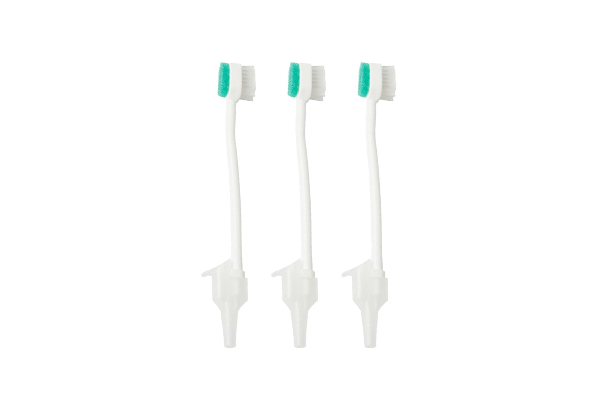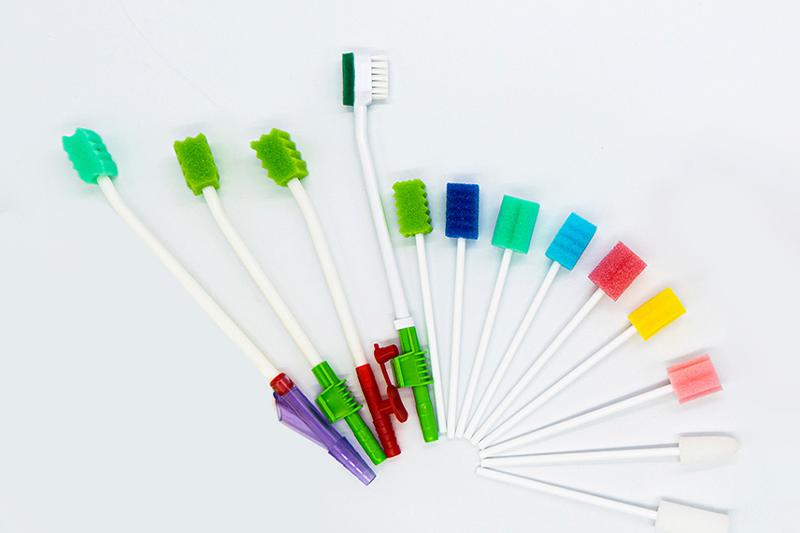Oral care is crucial for overall health, especially for those unable to brush their teeth due to physical, cognitive, or medical conditions. Oral swabs, including traditional sticks, suction toothbrushes, and suction swabs, help maintain hygiene and prevent issues like gum disease, tooth decay, and infections. Proper use of these tools can ensure effective care, comfort, and reduced oral health risks. This article will explore the correct techniques for each type of oral swab and their benefits in daily oral care routines.
What is an Oral Swab?
An oral swab is a soft, absorbent tool used to clean the mouth, teeth, gums, and tongue. It is designed to be used in place of a traditional toothbrush or as an adjunct for people who have difficulty with regular brushing. Oral swabs are commonly used for individuals who are bedridden, have limited hand mobility, are recovering from surgery, or suffer from cognitive impairments like dementia or Alzheimer’s disease.
Oral swabs come in several forms, including the basic oral swab stick, the suction toothbrush, and the suction swab. Each of these tools plays a different role in ensuring effective oral care, especially for individuals with special needs. A thorough explanation of how to use each kind of oral swab is given in the sections that follow.

Oral Swab Stick
An oral swab stick consists of a soft foam head attached to a stick or handle, designed for single-use or disposable cleaning. These swabs are typically used for patients who cannot use a regular toothbrush due to limited dexterity, cognitive impairments, or medical conditions that restrict movement.
How to Use the Oral Swab Stick:
Preparation:
Before use, ensure the swab is clean and moist. Some oral swabs come pre-moistened, while others may need to be dampened with water or a mouthwash solution to prevent discomfort.
Before handling the swab, always wash your hands well to prevent putting bacteria in your mouth.
Place the patient in this position:
If you’re assisting a patient, position them comfortably, either lying in a supine (on their back) or semi-reclined position. To avoid fluid aspiration, make sure their head is supported and angled back a little.
If the patient is able to assist, you can guide them to use the swab by themselves, ensuring they are seated comfortably.
Use the Swab:
Hold the swab stick by the handle and gently insert the foam tip into the mouth.
Begin cleaning the gums, teeth, and tongue with soft, circular motions. Pay attention to the cheeks, roof of the mouth, and under the tongue, among other parts of the mouth.
To prevent inflammation, gently move the teeth and gums back and forth.
Swabs are not meant to scrub the teeth as a toothbrush would, but rather to wipe away debris, bacteria, and plaque gently.
Dispose of the Swab:
After use, dispose of the swab stick immediately, especially if it is a single-use item. Avoid reusing it to prevent the spread of bacteria and ensure hygiene.
Clean any other oral care equipment used and wash your hands thoroughly after assisting with oral care.
Benefits:
- Gentle on sensitive mouths.
- Ideal for individuals who cannot use a traditional toothbrush.
- Effective for daily oral care maintenance.

Suction Toothbrush
A suction toothbrush combines the functionality of a regular electric toothbrush with the added benefit of a built-in suction system. The suction is designed to remove saliva, debris, and food particles from the mouth while the brush is in use, making it particularly helpful for patients who have difficulty swallowing, controlling saliva, or spitting.
How to Use a Suction Toothbrush:
Preparation:
- Ensure the suction toothbrush is properly charged or that the batteries are functional. Check that the suction system is working before use.
- Make sure the patient’s mouth is free of large food particles or obstructions.
- Wash your hands and, if needed, sanitize the suction toothbrush before use.
Position the Patient:
- Position the patient in an upright or semi-reclined position. For people who run the danger of choking or aspirating fluids, this is particularly crucial.
- Gently tilt the patient’s head forward, which allows for optimal suctioning of excess fluids and debris.
Activate the Suction Toothbrush:
- Turn on the suction toothbrush and set the brushing mode (if applicable). Many suction toothbrushes have settings for adjustable suction strength.
- Gently guide the brush into the patient’s mouth, starting at the top row of teeth. Begin brushing one section of the mouth at a time, moving slowly and gently along the gum line.
Brush and Suction Simultaneously:
- As you brush, the suction system will remove saliva and loosened debris from the mouth, ensuring that the mouth remains relatively dry and clear.
- Brush all areas of the teeth and gums, including the back molars, the tongue, and the roof of the mouth. Both the top and lower teeth should be cleaned.
- Avoid pressing too hard with the brush head, as the suction system works best with light pressure.
Rinse and Dispose:
- If the suction toothbrush is connected to a collection system, empty and clean the suction container after each use.
- If the toothbrush has a removable head, rinse it with warm water to prevent buildup of bacteria.
- Regularly clean the suction system to maintain hygiene and functionality.
Benefits:
- Ideal for patients with swallowing difficulties or excessive drooling.
- Helps prevent aspiration or choking during oral care.
- Provides a thorough cleaning while managing excess saliva.

Suction Swab
A suction swab is similar to an oral swab stick but is equipped with a suction feature to remove excess saliva, food particles, and debris from the mouth while cleaning. These swabs are especially useful for individuals who are bedridden or unable to spit, as the suction helps maintain a dry and clean mouth during oral hygiene routines.
How to Use a Suction Swab:
Preparation:
- Before use, ensure the suction swab is connected to a suction machine or has a built-in suction feature.
- As with other oral care tools, wash your hands before handling the suction swab.
Position the Patient:
- The patient should be positioned either in a reclining chair or lying down with their head elevated to minimize the risk of aspiration.
- Ensure the patient is relaxed and comfortable, as this will help them tolerate the cleaning process.
Put the Suction Swab to use:
- The suction swab should be gently placed in the patient’s mouth. The swab should be used to gently wipe the gums, teeth, and tongue. Use soft, circular motions to dislodge plaque, food particles, and bacteria.
- For patients with more significant oral secretions, the suction function of the swab will help immediately remove excess liquid from the mouth, ensuring that the area remains dry and clean.
- Move the swab around the mouth, ensuring that each tooth and gum line is cleaned thoroughly.
Dispose or Clean the Swab:
- Depending on whether the suction swab is disposable or reusable, either dispose of the swab after use or clean it according to the manufacturer’s instructions.
- Clean the suction device or suction unit thoroughly to ensure continued hygienic use.
Benefits:
- Effective for patients who have difficulty swallowing or who produce excess saliva.
- Offers a hygienic, relaxing, and non-irritating method of mouth cleaning.
- Prevents aspiration by removing excess liquid during the cleaning process.
Conclusion
Oral swabs, including sticks, suction toothbrushes, and suction swabs, are vital for maintaining oral hygiene in patients who struggle with traditional toothbrushes. Caregivers who understand how to use these tools can provide more effective and hygienic care. Whether caring for the elderly, post-surgery patients, or those with cognitive or neurological impairments, proper oral care helps prevent issues like gum disease, plaque buildup, and infections, promoting overall health and well-being.




